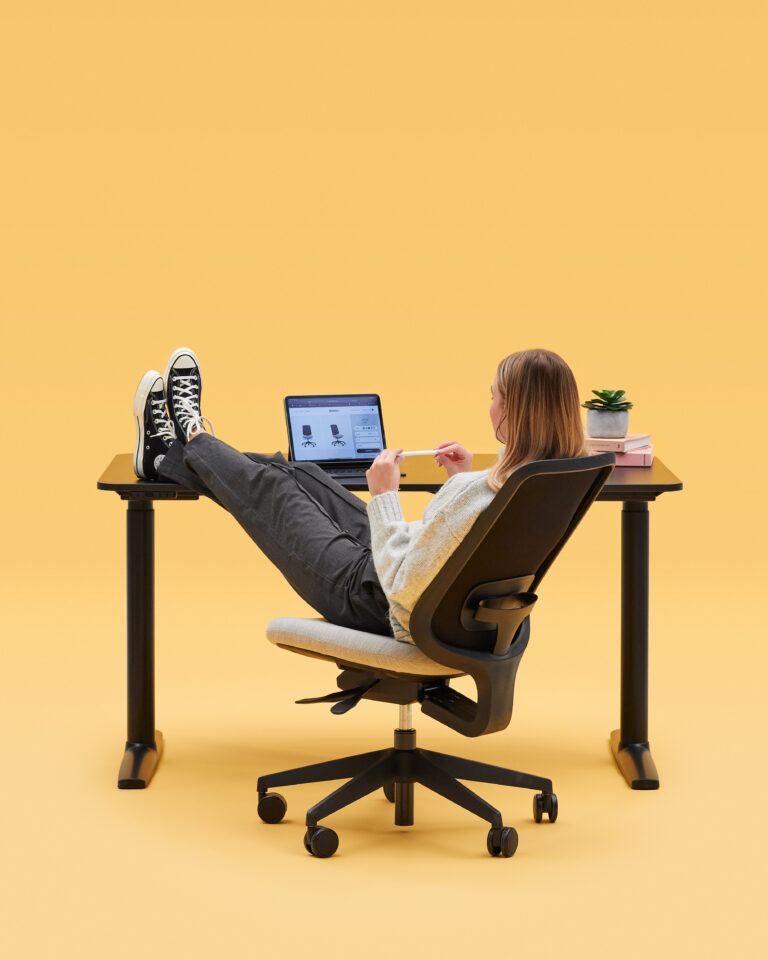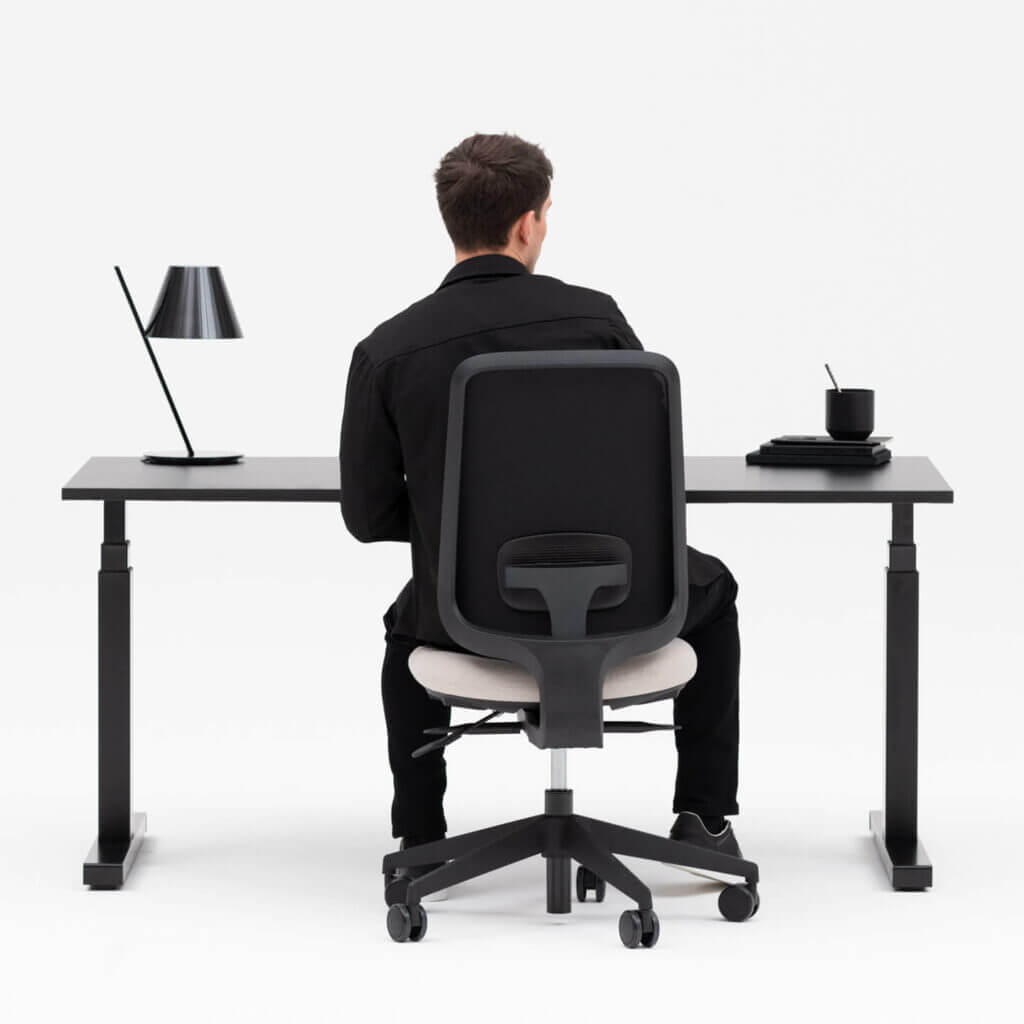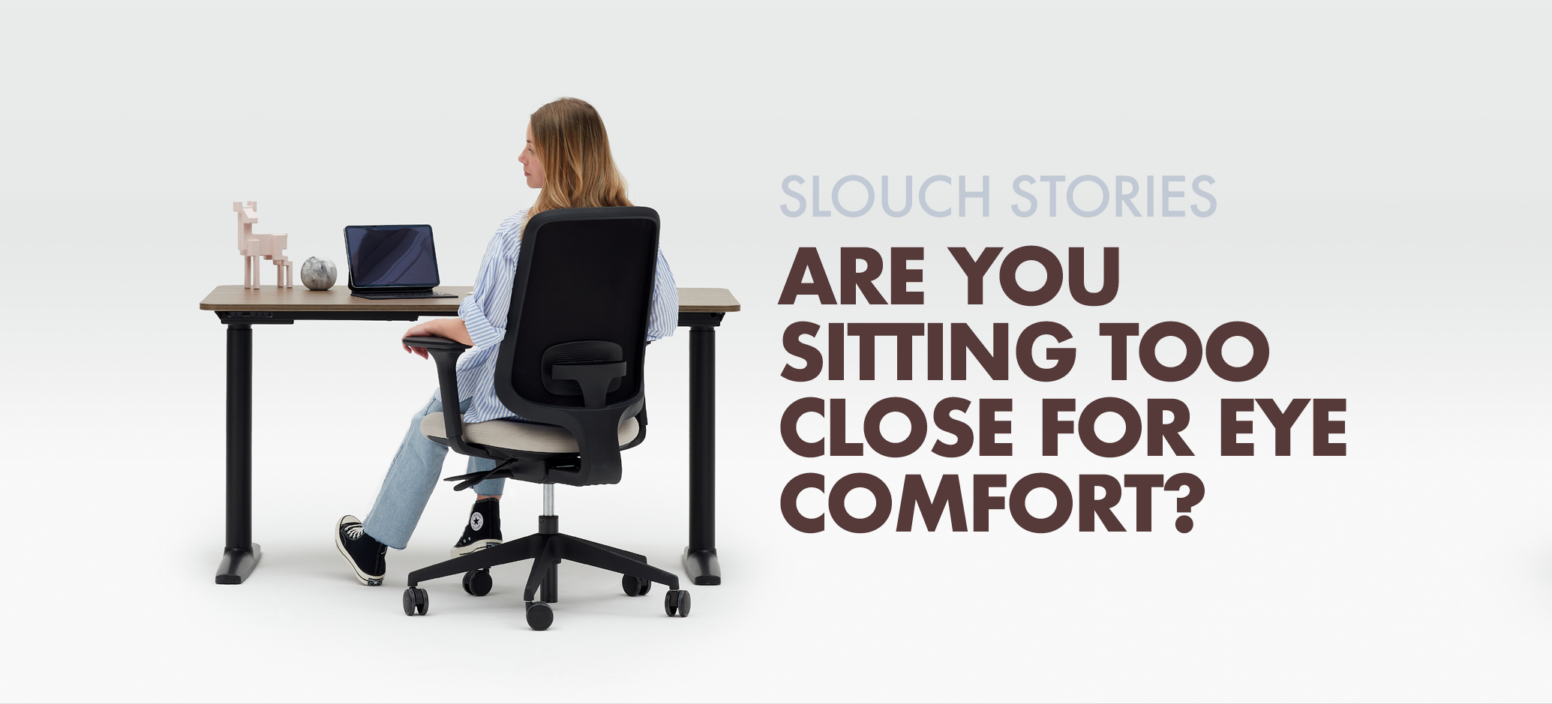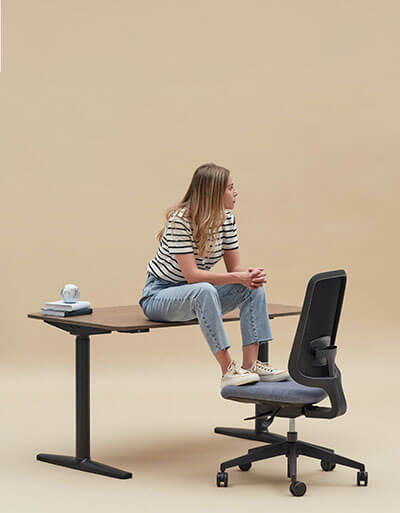Wondering how far away should the screen be from your eyes when working at your work desk? This comprehensive guide from the office furniture experts at Slouch will have your eyes feeling fresh and comfortable even after hours at the computer.

The ideal screen distance recommended by experts
So, exactly how far away should the screen be from your eyes? The Health and Safety Executive (HSE) is the UK’s national regulator for workplace health and safety. They provide guidelines and champion standards to ensure safe working environments across the country, including advice on using screens for office workers.
HSE recommends that your screen should be about an arm’s length away from you. General anthropological data puts the average adult arm length at somewhere between 28 – 31 inches (71 – 79 cm).
This general rule of thumb is a great starting point for most people and most devices. However, the exact distance can vary depending on the size of your screen and your individual needs.
At Slouch, our standard desk depth is a generous 75cm deep, compared to the national average UK desk depth of between 60cm and 80cm. This means you can comfortably fit your monitors onto a Slouch office desk and comply with HSE’s guidance on screen distance, even with larger monitor sizes.
How far away should your Screen be for different sizes?
While the arm’s length rule is a good starting point, let’s break down the ideal distances from screen to eyes for some common monitor sizes. This advice is based on the distance ranges given by OSHA (the US equivalent of HSE) on how far away a monitor should be, adjusting them for the particular monitor size.
Of course, the main aim is your eye comfort, so trial these ranges to see what works best for you.
24-inch monitors
For these popular-sized screens, the ideal distance from monitor to eyes is about 50-70 cm (20-28 inches). This distance should allow you to see the entire screen without squinting or straining your neck.
27-inch monitors
With these larger screens, you might want to increase the distance from screen to eyes slightly. Aim for around 60-80 cm (24-32 inches) away. This ensures you can comfortably view the whole screen without excessive eye or head movement.
Laptops
The issue with using a laptop instead of a desktop computer is that in order to comfortably operate the in-built keyboard and mouse you might find yourself far closer to the screen than an arm’s length.
Our suggestion is to get hold of a separate keyboard and mouse in order to maintain the correct distance from screen to eyes.
Smart phones
You might not think of this as a traditional work screen, but company-comms software like Yammer, Slack and Outlook mean that an increasing amount of people use their phones in a professional context.
Try keeping your phone at least 30 cm away from your eyes to reduce eye strain. This might feel too far at first, but over time you’ll adjust.
What happens if your monitor isn’t the right distance
The distance from screen to eyes should be adjusted for different monitor sizes because they will display larger or smaller text and images.
Have the monitor too close and you’ll be susceptible to eye strain and fatigue. Having the monitor too far, however, may lead to squinting and poor posture as you lean forward to see clearly.
That’s why it’s crucial to find the ideal distance from monitors to see clearly without straining. In this sense, screen distance is just another example of ergonomics, as it exists to put your body in harmony with your working environment.
How should your screens be set up?
Screen height
When considering the ideal distance from your monitor, don’t forget about desk height.
Aim to have the top of your screen at or just below eye level. This way, you’re looking slightly downward at your screen which is easier on your eyes and neck. If you’re constantly tilting your head up or down, you might end up with a sore neck by the end of the day.
For desktop monitors, a monitor stand can help you get the height just right. Using a laptop? A separate keyboard and mouse will mean you can place your laptop on a riser.
Using an adjustable height standing desk is another way to achieve the perfect monitor height to the exact millimetre.
Prefer to sit? An adjustable office chair can achieve the same effect.
Screen position
Keep your screen front and centre. Having it directly in front of you means less twisting and turning – your neck and back will thank you later.
If you’re part of the multi-monitor club, put your main screen straight ahead and angle any others slightly inward. This setup helps maintain the ideal distance from monitor to eyes for all your screens.
Screen angle
A little tilt goes a long way when it comes to how far away your monitor should be. Try angling your screen back slightly, about 10 to 20 degrees from vertical. This can help cut down on glare from overhead lights and make it easier for your eyes to focus, even if you’re sitting at the recommended distance from screen to eyes.

Signs you’re sitting too close to your screen
If you’re experiencing any of the following symptoms, you might be sitting too close to your screen:
- Headaches
- Dry or irritated eyes
- Blurred vision
- Neck or shoulder pain
- Difficulty focusing on distant objects after screen use
Find your ideal distance from screen to eyes and you’ll fend off these symptoms.
Of course, there are other factors to consider for a truly comfortable working environment you can spend hours in without strain or distraction. We’ll cover these next.
Other advice for an ergonomic desk setup
Ready to make your workspace more ergonomic? Take a peep at these handy tips that’ll have you working smarter, not harder.
- Use natural light – Consider placing your desk in front of windows in your office to take advantage of natural light. There are heaps of benefits including reducing eye strain.
- Stay organised – Ensure you have all of your desk essentials to hand, ready to use when you need them. That way, you won’t need to break your flow state.
- Find the best desk for you – Consider the type of desk that will help you focus best – some people find that standing intermittently helps their productivity enormously.
Ready for a more comfortable workday?
Discover Slouch’s range of ergonomic office furniture designed to keep you comfortable and productive all day long. From adjustable desks to supportive chairs, we’ve got everything you need to create the perfect workspace – browse our collection today and transform your home office.
Need answers to a question or want to buy more than 5 of our desks or chairs? Fill out this contact form or email us at [email protected] and our experts will be in touch to assist.

